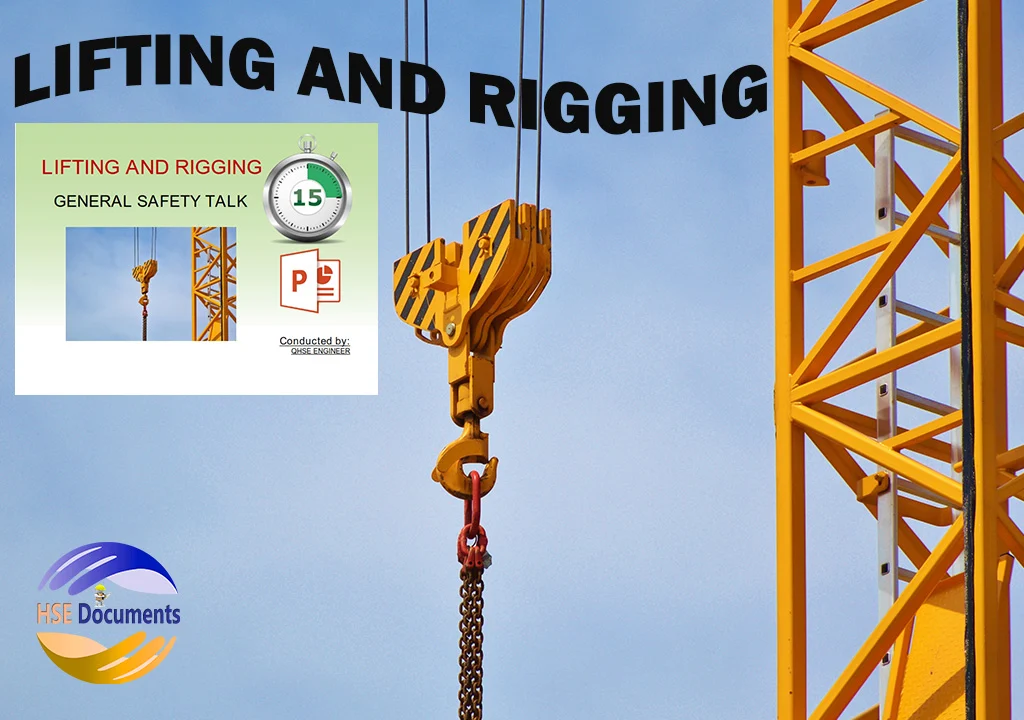LIFTING AND RIGGING
Lifting and rigging work tasks are considered high-hazard tasks by many companies. Various identical and associated hazards follow and escort lifting any loads with heavy lifting machinery such as cranes or equipment. It is essential to understand appropriate rigging methodologies and techniques, but also the other critical hazards associated with this type of lifting and rigging work task.
LIFTING AND RIGGING INCIDENTS SAFETY
MOST OCCURRING INCIDENTS INVOLVED IN LIFTING AND RIGGING
The initial and primary type of incidents that usually comes to mind regarding lifting and rigging are:
- Breakage of a Sling
- Breakage of Wire Rope
- Breakage of Chain
IMPACT OF THE LOAD DROPPINGS IN LIFTING AND RIGGING OPERATION
The load droppings from the lifting and rigging operation and activities incidents generally have the most severe safety consequences. Moreover, several other less severe incidents cause the majority of the following impacts on humans or the workforce involved in the lifting and rigging work:
- Injuries or property damage.
- Sprains
- Falls
- Crush injuries
- Electrocutions
STRUCK-BY INCIDENTS HAZARDS
- Swinging loads
- Manual handling of heavy rigging
- Holding on to tag lines
- Moving equipment
- Pinch points
- Working on elevated surfaces
- Trip hazards
- Slippery surfaces, etc.
LIFTING AND RIGGING SAFE WORK PRACTICES
- All workforce/employees/personnel in a work area where a lifting and rigging operation is being conducted should be essentially well trained on the lift & rig work scope, associated various hazards, and rectification and mitigation of the task.
- Have a documented rigging and lifting plan. An authentic and proper lift plan ensures the required rigging, angles of equipment, lifting capacities/capabilities and integrity, etc. are thought about before the start of the lift or rigging work.
- Plan the travel area and potential lines of fire before the lift. This helps to avoid striking other objects or having to move objects or equipment after the load is already in the air.
- Inspect all rigging before using it for a lift. Frequently evaluate, observe and closely check the strength and capability/integrity of the lifting machinery and associated devices throughout the day if there is more than one lift.
- All rigging operations/activity should be essentially and properly maintained and stored after lifting operations are accomplished. Well-planned, secure, safe, and appropriate storage always assist to prevent the rigging from being damaged or any other deterioration.
- Always keep and maintain a safe distance and keep away from the load. Try to have a plan and apparent aim of tackle to utilize the tag lines or push sticks to make sure well and proper space from the load being lifted or rigged. This will enhance the safety of all areas including assets, machinery, environment, and personnel involved in the lifting and rigging activity.
SUMMARY
This is not an exhaustive list of all the hazards and safe work practices when completing lifting and rigging activities.
- Proper planning is important to eliminate hazards and avoid incidents.
- Be aware of the hazards that affect you and your coworkers on each unique lift that is completed.
DISCUSSION POINT:
- Highlight other hazards while carrying out lifting and rigging activities at the worksite?
- How do avoid such critical hazards’ consequences?
 |
| LIFTING AND RIGGING GENERAL SAFETY TALK |








No comments:
Post a Comment